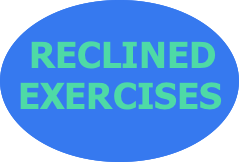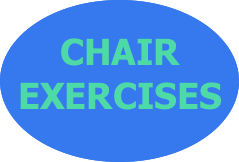  
Now available for download... 
Think of exercise as an important part of your treatment plan if you have an autonomic disorder. It can be just as important as medications your doctor may have prescribed, and the good news is that exercise is free and can be done at your own pace.
Before you begin an exercise regimen to help manage your symptoms, you should check with your doctor and get cleared to exercise. Your doctor can help you identify target heart ranges and goals for your exercise therapy.
There are several different options available to patients who would like to begin an exercise program. You can work out on your own at home, or with a workout buddy. You can join a local gym or pool. You can hire a personal trainer to help get you started. You can go to a Physical Therapist's office. If you are homebound, you may be able to have a Personal Trainer or Physical Therapist visit you in the home.
Many hospitals now offer cardiac rehabilitation programs. While these programs are meant for people who have just undergone heart surgery or who are recovering from a heart attack, a cardiac rehab program may benefit some dysautonomia patients. These programs usually require the patient to come to the hospital every weekday, or several times a week, until the program is completed. Often the cardiac rehab programs monitor the vital signs of the patient during exercise.
Finally, there are intensive in-patient physical therapy programs, for severely deconditioned patients. In an in-patient physical therapy/rehabilitation programs, you may be exercising 3-4 hours a day, and such programs often include occupational therapy and self-care therapy as well. These programs teach the patient safe adaptive techniques to prepare food, bathe, dress, get in and out of cars, etc.
Dysautonomia patients usually fare better with exercises that do not cause orthostatic stress. Reclined exercises like stretches, yoga and gentle weight lifting done from a seated or laying down position, recumbent biking, rowing and swimming are examples. Only after the patient has spent a substantial amount of time building up tolerance to these exercises, should the patient attempt to begin upright exercises like jogging or upright biking.
Everyone begins at a different starting point. Where you begin with your exercise therapy, really depends on what your current level of fitness is. If you have been bedridden for years and are unable to walk, then you will obviously start slower than someone who works a full-time job on their feet all day.
If you'd prefer to try some exercises at home, here are a few tips to get you started. And again, we encourage you to check with your doctor before beginning a new exercise program.
Level 1 - Reclined Gentle Movements
This is the starting point for those patients most severely disabled by an autonomic disorder. If you are bedridden, this is your first step. We have known dysautonomia patients who were bedridden for years, and we able to work their way from "barely able to move" to biking 45 minutes a day, everyday. It will be hard. It may make you feel worse in the beginning. But the human body was meant to move. Just take baby steps until you can make it to your goal. Some patients can only do one minute a day, or one minute at a time, a few times a day. And they do this every day for a week, and then they increase to two minutes a day the next week. This is a very slow process, but improving your health slowly is better than not improving it at all. Helpful exercises may include:
Leg Pillow Squeeze - while laying down or reclined in bed, put a pillow folded between your knees and squeeze. Hold it for 10 seconds. Repeat.
Arm Pillow Squeeze - put the pillow folded between your palms and squeeze together as though you were putting your hands into a praying position. Hold it for 10 seconds. Repeat.
Alphabet Toes - while laying in bed, write your name in the air with your toes. If you can build up your strength, write the whole alphabet. Do this several times a day.
Side Leg Lifts - while laying on your side, lift your leg up sideways and then bring your leg back down, without touching your legs together. Repeat.
Front Leg Lifts - While laying on your back, life your left leg up, pointing your toe towards the ceiling. Repeat. Switch to right leg.
Gentle Stretching - any kind of stretching helps move blood around in the body and takes stress of your joints if you have been sitting or laying in the same position for a long time. Go through the entire body doing mild stretches, from feet, to legs, to back, to arms, to neck. Doing this when you wake up can be a great way to start the day, and repeating your stretches before bed can help you relax and sleep better.
Level 2 - Recumbent Cardio Exercises
This is probably the level that most patients will be able to begin with, although everyone can benefit from the gentle stretching and toning exercises described in Level 1.
Always begin your workout with 5-10 minutes of stretching and/or yoga to warm up your muscles and protect your joints from injury.
Since the point of these exercises is to get your cardiovascular system to be more efficient, you will want to set a target heart rate for your workout. You should speak to your doctor about this because medications and other medical conditions can impact your target heart rate, but most patients can tolerate a workout at 75% to 80% of their maximum heart rate. Mayo Clinic has a Target Heart Rate Calculator you can use as a guide when speaking with your doctor.
You may want to purchase an exercise heart rate monitor to wear during your workouts to help you keep your heart rate within your target zone. Dysautonomia International does not endorse any specific products, but exercise heart rate monitors with chest straps are usually more accurate than pulse oximeters you place on your finger. This is especially so for dysautonomia patients who have abnormalities in peripheral blood flow (common in some forms of dysautonomia), as this is more likely to give an inaccurate reading using a finger based monitor.
Suggested reclined cardiovascular exercises include:
Rowing - use a rowing machine, or if you are feeling well enough, a kayak. You may want to start out slow, maybe 2-5 minutes a day. At your own pace, adding a few minutes per week, try to work your way up to 45 minutes per day, 5 days a week, with 30 minutes of your routine done in your target heart rate zone. Be sure to warm up at the beginning and cool down at the end.
Recumbent Biking - recumbent exercise bikes are different than regular exercise bikes. They seat the rider in a reclined position, rather than upright. Try recumbent biking a few minutes a day, adding a few minutes each week, until you can work out 45 minutes a day, five days a week, with 30 minutes of that workout in your target heart rate zone. Be sure to warm up at the beginning and cool down at the end of each workout.
Swimming - The pressure from water helps prevent orthostatic symptoms. Dysautonomia patients who have been bedridden for years may be able to stand upright for an hour in a pool, because the pressure from the water prevents orthostatic symptoms from occurring, or lessens their impact. Dysautonomia patients can take advantage of this to get a good cardio workout, or to focus on stretching and strength training in the water. Always swim with a spotter or a buddy who can keep and eye on you, just in case you develop lightheadedness or other symptoms that would make it unsafe to be in a pool. It may be best to start your swimming exercise program at a pool with a lifeguard, or with a Physical Therapist who specializes in aquatic therapy. A good old fashioned kick board can be a great tool for dysautonomia patients. You can kick your way around the pool, which gives you a good cardio workout, and all that kicking helps strengthen your legs. Toning up your legs and core is a great way to minimize orthostatic symptoms.
Weight Training - Most dysautonomia patients can benefit from overall increase in tone and strength. The stronger our muscles are, the more efficiently they use oxygen, the better we will be able to tolerate orthostatic stress. Special emphasis can be placed on strengthening leg and core muscles. Some patients find it useful to wear 2 to 4 lb. weights that attach to the ankles with velcro. This can really help with leg strength if you wear them often enough. There are also machines at the gym that assist with core and leg weight training. Begin with light weights, and use them in a reclined or seated position. Some patients become extra symptomatic when lifting their arms over their head, so take extra care if attempting to do that.
Level 3 - Normal Workouts
Some dysautonomia patients are able to jog, run marathons or walk several miles a week. These patients should do whatever they can to continue these activities. Dysautonomia patients who are well-conditioned should exercise 45 minutes a day, at least 3 days per week. Special emphasis should be placed on leg and core strength, and cardiovascular exercises.
| | |




